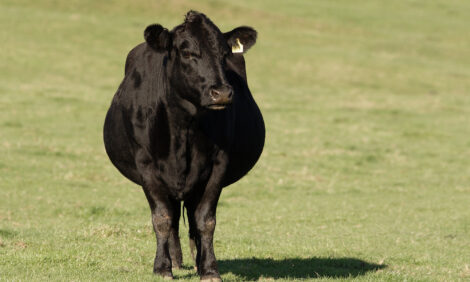



Improving Ecuador's Cattle Industry
The second phase of an international project providing technical assistance to improve cattle production and dairy product quality in Ecuador has been completed.Assistance has been provided through the Norman Borlaug Institute for International Agriculture and the Texas AgriLife Extension Service.
"Activities have been carried out in cooperation with the US Department of Agriculture’s Foreign Agriculture Service and Ecuador’s Ministry of Agriculture," said Johanna Roman, Latin American programs coordinator for the Borlaug Institute.
The primary areas of interest to the ministry included disease prevention and treatment, herd production and management systems, meat and dairy product quality, and value chain development, she said.
Project activities include introducing Ecuadorean cattle producers to US cattle production and management systems, providing technical training on livestock and dairy production and management, establishing connections between the agriculture ministry and public and private cattle producers, and identifying and addressing “broken links” in the livestock value chain.
An extensive and comprehensive training program has been developed for the project, said Dr Mike McWhorter, international training coordinator for the Borlaug Institute.
“The main thrust of this training is toward improving the quality and quantity of the food base for Ecuador's beef cattle and dairy producers,” Dr McWhorter said. “We’re introducing producers and other agricultural experts to new technology, management practices and international quality standards so they can see how these might be adapted to their current production systems."
The first phase of project activities included bringing a delegation of Ecuadoran producers and agriculture ministry representatives to Texas in August of 2009. Members of the delegation participated in technical training offered by the Texas AgriLife Extension Service during its three-day Beef Cattle Short Course at Texas A&M and met with cattle producers from Texas and other states. They received instruction on animal genetics and breeding, viewed advanced livestock projects and visited cattle production operations.
"The second phase of the project involved providing in-depth technical assistance in Ecuador," said Ms Roman. “Experts from Texas A&M’s department of animal science provided hands-on training to Ecuadoran cattle producers and agriculture ministry representatives. They addressed animal health and care, animal disease, livestock production systems, animal slaughter and other topics."
Ms Roman said the goal of the training was to increase local production capacity for beef and dairy products and to improve the export potential for high-value cuts of beef.
“In August, Dr Griffin and I conducted a five-day instructional and hands-on demonstration workshop for representatives of a large Quito-area beef processing plant, the city-market system and Ecuador’s ministry of agriculture,” said Dr Joe Paschal, AgriLife Extension livestock specialist at the Texas AgriLife Research and Extension Center in Corpus Christi. “There were cattle producers and meat-cutters, veterinarians, market managers and others. We focused initially on beef-cattle genetics and nutritional effects on growth and carcase composition.”
Dr Paschal said the cleanliness and food safety aspects of the larger beef processing facilities he visited were “above average” and that some of the greatest interest in the training came from the discussions of cattle breeding and hands-on demonstrations of different ways to fabricate cuts of meat.
“Ecuadorans typically use lighter, grass-fed beef carcases from which they fabricate their traditional cuts of meat,” he said. “We showed them new styles and techniques for beef fabrication using a heavier carcass, and focused on safety during the cutting process. We also discussed how to improve cattle production, and how to breed and feed cattle to produce more tender beef with better texture and flavour.”
Dr Davey Griffin, an AgriLife Extension statewide meat specialist at College Station also provided instruction and expertise during the five-day training.
“I explained North American meat manufacturing specifications and how the US Department of Agriculture grades various cuts of meat, Dr Griffin said. “I also demonstrated US cutting procedures and how to produce value-added cuts of beef, including how to fabricate cuts from heavier carcases and market certain beef muscles with different palatability characteristics.” Dr Griffin said Ecuador wants to establish its own beef grading system, and understanding how the USDA categorizes and grades beef will help them achieve that goal.
“Before we left, the manager of one of the large meat processing facilities there told us he was already implementing some of the different cutting styles so he could produce and market new cuts of meat to his customers,” Dr Griffin said.
The third part of the project will involve providing technical assistance toward quality improvement for milk and other dairy products, Ms Roman noted.
“The agriculture ministry has expressed an interest in increasing the export potential of Ecuador’s dairy products, so the final phase of the project will focus on increasing product quality so Ecuadoran dairy product will be more marketable in other countries,” she said.


